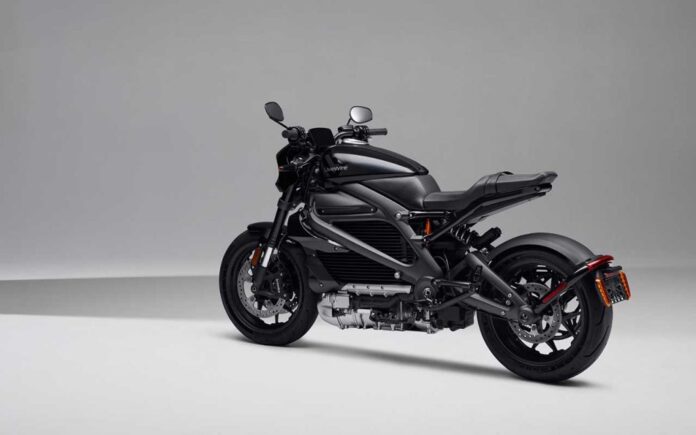Recently, ANFIA, the Italian Association of the Automotive Industry, has divulged the data concerning ACEA quarterly investigation about the car market depending on the power supply typology, which concerns the EU area (Malta excluded), extended to EFTA and to the United Kingdom. Well, results arouse the optimism of the electric motor market, because the cars with alternative power supply prosecute, undeterred, their peak of sales, which overall grow by 147%. The analysed area counts, for the January-June 2021 period, about 6.5 million new registrations, 27.1% more than the first 2020-semester. Compared to the first half of 2020, the registrations of petrol cars score the 2.4% rise, whereas the sale drop for diesel (-9.9%) is going on. PHEV achieve the most significant growth (+200%), followed by conventional hybrid (+150%) and by electrical battery models (+122%). Natural gas cars and the others (LPG and Ethanol included), although they constitute a very marginal part of the market, show growth signs, respectively +8.5% and +114% versus the same period of the previous year.
In the first 2021-semester, consumers have prevailingly chosen electrified models, rising market shares to 15.9% for rechargeable ones (of which 7.6% pure electric and 8.3% PHEV) and to 19.8% for conventional hybrid. Overall, 2,314,874 hybrid and electric cars, which represent 35.7% of the market, were registered. In the picture, the graph ANFIA Study and Statistic Area on ACEA data.
The market of electric cars goes on growing: +147% the alternative power supply cars
Electric motors at the next Olympic Games?
At each occurrence, Olympic Games bring with them the worry for motoring enthusiasts of not being allowed getting upset by cheering on their favourites.
In fact, motor sports do not satisfy a fundamental requisite to be considered an Olympic sport: competing on equal conditions. It they introduced a race of MotoGP or of Formula 1 in the programme, each team would compete with a different vehicle, a problem that might be solved by creating specific motorcycle or car classes, with the same electric vehicles. Moreover, the Olympic Committee acknowledges the federations of motor sports but it specifies the difference between pilot and athlete, because despite the physical and mental skills with which both are provided, the means unavoidably influences the performances of the first.
However, concerning this something might change and recently, on the occasion of the Formula Uno race in Monza, they precisely spoke of the possibility of seeing electric motors in the next editions of the Games.
«We are not an Olympic Federation – explained Angelo Sticchi, president of Aci – but something might happen due to the arrival of electric motors and simulators: something more connected with the ability than with the vehicle. I am highly confident in Malagò. FIA, thanks to our friend Jean Todt, has joined Cio for three years, it will certainly mean something».
Here is the witness by Giovanni Malagò in person, at the head of CONI: «Perhaps it is a bit premature, but everything can happen, also because Cio programme is always notably evolving. It is clear that the electric issue, and simulators as well, ‘the virtual’, give a great perspective».
Incentives: additional 57 millions for electric vehicles
Good news for the world of electric vehicles. Over 57 million Euros will be in fact allocated for the Italian eco-bonus for the purchase of electric cars in the ambit of the sustainable Infrastructures and Mobility Decree approved in the Council of Ministers. This has been recently announced by the Italian Ministry for the Economic Development, explaining that the resources programmed for the extra-bonus are reallocated on the ordinary fund of the eco-bonus incentive to assure and to optimize the use of funds intended for the purchase of less polluting vehicles. In this way, bonuses from which buyers will benefit will be not negligible like typical ones of extra-bonuses (1,000/2,000 Euros) but they will be consistent, like the original eco-bonuses (even up to 8,000 Euros of savings).
Moreover, Draghi Government has decided delaying the expiry terms of the application submission, considering the delays in the production, sale and registrations of this kind of cars.
The procedure to apply for the bonus can be accomplished by December 31st 2021, if the input was performed within the first six months of the year, otherwise within June 30th 2022, if the input occurred in the last six months of the year.
Hydrofoil makes electric fly
What do we mean with hydrofoil? We define hydrofoil a lifting surface – also called foil – that operates in water. The hydrofoil look, in fact, is very similar to aircraft airfoils. The physical operation is similar as well and it is subjected to fluid-dynamics and hydrodynamics laws. When the speed of the means on which it is mounted increases, the hydrofoil generates a thrust that is equal to the means’ weight – generally a boat but it is used on surfs or kites, too – pushing the hull out of water, in this way notably decreasing friction and then enabling higher speed. The advantage? More efficiency and a decrease of the fuel use, even up to 35% for motors; concerning surfs or kites, the possibility of reaching high speeds even with low waves or moderate winds.
Today the electric is trying to make its way also in the yachting sector but making fast electric boats is very difficult. To overcome the water friction, conventional hulls need enormous batteries to reach higher speeds. However, this increases their weight and cost, without anyway rising their speed proportionally, then standard electric boats have much lower autonomy than fossil-fuel competitors. For this reason, the Swedish electric Candela C-7 speedboat has been equipped with a hydrofoil and now it “imitates aircrafts to fly above the water”, reducing friction and finally permitting long electric autonomy at sea. This makes Candela C-7 the first electric boat in the world that combines long-range autonomy and high speed. The 6-passenger daycruiser flies above waves at a speed of 30 knots, using very little energy from its 40-kWh battery.
Hydrofoil is the secret of its efficiency indeed. The two-winged hydrofoil, combined with state-of-the-art computers, software and sensors, at speeds exceeding 14 knots, supplies a sufficient lift to lift the hull above the water, reducing the water friction by 80%. This allows an autonomy of 50 nautical miles at 22 knots, which is three-time higher than any other fast electric boat on the market.
If you combine the hydrofoil technology with state-of-the-art computerized control technologies, then the result is even more astonishing. In Candela C-7, for instance, the hydrofoil is adjusted by a computer resembling flight controllers used in modern fighter aircrafts. Hydrofoils are automatically regulated 100 times per second to assure stability. The result is an extremely smooth and completely silent ride, even in presence of wind and waves. Due to the efficiency of foils and to the aerodynamic electric propulsion unit, the operation cost of a C-7 is 95%-lower than a conventional fossil-fuel boat. At a cruise speed of 20 knots, the energy consumption per nautical mile is just 0.8 kWh, the equivalent of 0.2 litres of petrol. Hydrofoil is really a technology that can make the electric pleasure boating competitive.
Playing with electric motors
Powerup 4.0 electric small-size motor can be adapted to whatever model aircraft made of paper, balsa or other materials, to provide a thruster can transform a child’s game into a didactic flight experience.
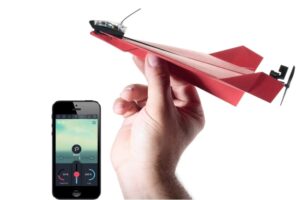 The latest version is equipped with electronic stability control, a minicomputer for the flight attitude control, a gyroscope, two independent motors with differentiated thrust, electric motor, acrobatic performances, assisted take-off and landing. The thrust generated by this propulsion plant can make the model aircraft fly at a maximum speedof 36 km/h, with eventual aerodynamic “imperfections” that will be rebalanced and corrected.
The latest version is equipped with electronic stability control, a minicomputer for the flight attitude control, a gyroscope, two independent motors with differentiated thrust, electric motor, acrobatic performances, assisted take-off and landing. The thrust generated by this propulsion plant can make the model aircraft fly at a maximum speedof 36 km/h, with eventual aerodynamic “imperfections” that will be rebalanced and corrected.
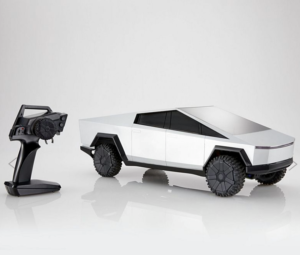 Another phenomenon in the model world belongs to the electric pickup of Tesla Cybertruck, with Hot Wheels brand. The radio-controlled model launched at the end of 2020 was impressively sold-out in very short time and Mattel has started the reorder for a supply expected to restart next May. Customers are offered two sizes of the radio-controlled Tesla Cybetruck: one in 1:64 scale and the other, the most coveted, almost 60-centimetre long, can comfort- ably move on whatever ground, turn on front and rear lights and offer two drive modalities tranquil “chill” and “sport”.
Another phenomenon in the model world belongs to the electric pickup of Tesla Cybertruck, with Hot Wheels brand. The radio-controlled model launched at the end of 2020 was impressively sold-out in very short time and Mattel has started the reorder for a supply expected to restart next May. Customers are offered two sizes of the radio-controlled Tesla Cybetruck: one in 1:64 scale and the other, the most coveted, almost 60-centimetre long, can comfort- ably move on whatever ground, turn on front and rear lights and offer two drive modalities tranquil “chill” and “sport”.
The rear can slide turn into a ramp and the body- work can be removed to enter interiors with battery and transmission.
Motor area more compact
To manage the rotation speed of the electric motor, parallel to the frame and no longer transversal, BMW has chosen using the planetary gear reducer.
It is a patent that will be probably integrated on Motorrad Vision DC Roadster, which might revolutionize the sector of electric motor bikes and which concerns the motor, the transmission shaft and the overall agility that this solution would give in terms of design and efficiencies.
The new patent by BMW shows a shaft that is parallel to the frame instead of having a transversal position compared to it. This choice makes the whole motor area more compact and besides it makes use of a shaft with constant velocity joints at each extremity between the motor and the front part of the final transmission of the shaft: the motor can be positioned with more freedom inside the frame.
Moreover, electric motors turn much faster and their rotation, before transmitting the power to the rear wheel of the bike, is managed by a gear reducer directly mounted directly behind the motor, reducing the output shaft speed even keeping it in line with the main motor shaft.
IMA strategy in the business of electric motors
The focus direction towards the electric mobility is also highlighted by recent corporate strategies. The latter include the takeover of 80% of FASP, company that develops technological systems for the manufacturing of electric motors by IMA Group, operating in the design and production of automated machines for the packaging of pharmaceutical and food products, drinks and cosmetics, which is part of BC Partners and of Vacchi family.
Established in 1981, FASP operates in the production of stand-alone machines, of complex plants as well as in the implementation of fully automated turnkey lines.
The company supplies innovative efficient solutions to electric motor manufacturers that operate in a broad range of sectors: automotive, electric vehicles, domotics, lifts, electro-pumps, submerged motors, energy generators and various industrial applications concerning the winding and wire insertion technology.
This takeover implements the portfolio of solutions with high technological content supplied by IMA in the field of automated machines for the production of electric motors.
The electric boat of the future
The first world championship of electric boats, UIM E1 World Electric Powerboat Series, has involved the presentation of the new design of the electrified race boat RaceBird that will compete starting from 2023.
RaceBird lines were presented by the creators of E1 Series: Alejandro Agag (president of E1) and Rodi Basso (CEO of E1) former Italian aerospace engineer who worked for NASA, Ferrari and Red Bull in Formula 1. This involved the collaboration of Raffaele Chiulli, president of the International Federation of Motorboating – UIM, Sophi Hornealla, founder of SeaBird Technologies and Brunello Acampora, founder and CEO of Victory Marine.
A step that shows the importance of introducing also in the nautical sector the progresses reached until now in competitions, where the new electric cars are protagonist. The same founder of Formula E and of Extreme E will be in fact the company’s President whereas Rodi Basso will be appointed Managing Director.
«We believe – stated Alejandro Agag– that this new series will succeed in involving not only sportsmen, lovers of boating and of new technologies, but also those who care about the future of our oceans and of the planet. Lakes, rivers and oceans live a critical situation and the E1 series will unavoidably pave the way to the electric motion on water for future generations».
The name itself of boats indicates how much these electric boats are inspired by birds hovering above water.
The new silent roar of Harley Davidson
It made its début last July 18th and since 2022 it will be available on international markets. We are speaking of the new electrified Harley Davidson, LiveWire One, and proposed without the mythical logo from the iconic United States company. Therefore, it will have a dedicated EV brand, to underline that the electric range is a fully different story.
However, let us take a step back: the first electric HD, LiveWire, was conceived for the urban environment and was presented 3 years ago: the motor features 78 kW of power and has a maximum autonomy of 235 km, actually the same characteristics as LiveWire One.
The electric motorcycles is always connected to transmit road indications, to monitor the warnings and the recharge status. The bike recharges in DC Fast Charge from 0 to 100% in 60 minutes and from 0 to 80% in 45 minutes, with advanced software and hardware.
The great challenge of the supply chain
In the whole industry, we risk a trend of price rise, owing to the pressure of the provisioning chain costs, especially of raw materials. However, the crisis in course of the current semiconductor supply has ancient roots. We are analysing the reasons with Andrea Rossi, Managing Director of Ics Industrial, Milanese reality introduced in the Chinese scenario, in Shenzhen. From shortage to counterfeiting, from the chip hoarding to the price escalation.
Everybody knows the industry of semiconductors is living a crisis because of an intrinsic difficulty in the provisioning of components and that it will still last for a long time.
Those who have decided buying a car (delivery delays: nowadays chips are the component number one) or have tried repairing a household appliance are aware of the crisis related to the difficulties of semiconductor provisioning.
Among the known causes of the difficulties that are affecting semiconductors’ world, pandemic ranks first, as well as especially the effect it has produced on the entire supply-manufacturing chain of semiconductors.
Since the beginning of 2020, fewer cars have been sold but many more computers and electronic devices for smart working: the market has displaced its focus and now, when things are trying to recover the previous situations, the balance of power has changed.
Meanwhile, 5G has started worldwide, with the inherent consequences in terms of IoT, edge computing and of the countless applications of the Artificial Intelligence.
Anyway, there is perhaps something more, less functional and more geopolitical.
Like the tug-of-war between China and USA (where semiconductors are the fourth sector by export, after aerospace and petroleum, crude and refined) owing to matters of duties and balances on the big market, where also Taiwanese companies operate (such as Tsmc) and Korean (like Samsung).
Besides, the Semiconductor Industry Association has recently communicated that in 2020 the demand for semiconductors grew by 6.8%, (worth 440 billion dollars), with a notable growth rate for a mature sector.
A number that not only kept on rising in the first 2021-quarter, but it even doubled (+12%) and is likely to grow further. Analysts, even the most conservatory, report +19% by the end of the year.
Such data have not emerged for at least ten years in the semiconductor sector.
The floor to a semiconductor expert who knows China
This is the picture. However, the existence of something more is witnessed by Andrea Rossi, managing director and founder of Ics Industrial, reality headquartered in Milan, whose name stands for “I Choose Shenzhen”.

A declaration of intent in the brand, because, Rossi explains, “Shenzhen is the global capital of the hardware business: 90% of world electronics is traded there”.
What is the mission of an Italian Milanese company in Shenzen?
We were born to allow companies in various sectors to eliminate superfluous stages in the purchase process of electronic components.
Our peculiarity consists in our partnerships rooted in Shenzhen. They are the components mounted on Printed Circuit Boards (Pcb).
They are split into active and passive components and the present crisis mainly affects semiconductors, then active components.
Who generally buys electronic components?
They are manufacturers addressing a broad range of sectors: automotive, electromedical, decoders, measuring and control instruments, smartphone, pc, laser cutting machines, conditioners, air purifiers and inverters.
Whatever product that contains electronic boards, in other words. Moreover, some companies assemble the boards, then they mount the components in printed circuit boards for some enterprises in the above-mentioned sectors, and they are called subcontractors.
Whom do the companies that buy components generally address?
They rely on two ways. One consists in official distributors (big Groups, like Arrow and Avnet).
They distribute the major semiconductor brands (ST, NXP, Microchip, Texas Instruments and many others).
At present, they miss endless parts in stock.
Then there are local Italian or European brokers.
They buy from China, although they are reluctant to communicate it to customer companies (some of them still confuse the Made in China with understanding that Shenzhen is the Silicon Valley of hardware).
In their turn, local brokers turn to Asian brokers, with consequent high prices for end-users.
We directly address stock holders in the primary global market, that is to say Shenzhen.
What is happening in the market of semiconductors?
The global market of semiconductors is shocked by the unavailability of fundamental components for the product implementation.Components are identified by a part number: fundamentally, an alphanumeric code.
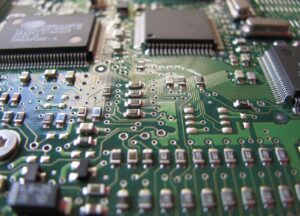 Currently, it is very difficult to trace many part numbers. Official channels indicate delivery terms (called lead times), sometimes of 26 or even 52 weeks, without the certainty they can be respected.
Currently, it is very difficult to trace many part numbers. Official channels indicate delivery terms (called lead times), sometimes of 26 or even 52 weeks, without the certainty they can be respected.
How did this come about?
Semiconductor producers manufacture a lot in China. Last year, in March and April, at the peak of the Chinese lockdown, factories had interrupted or considerably slowed down the production.
The long wave is coming now.
During 2020, especially two sectors increased the demand for components: electromedical and remote telecommunications.
The first due to the need of producing devices contrasting the pandemic: let us just consider respirators but also thermometers and oximeters.
The second because the smart working has needed and will require huge investments in technologies.
The global stocks of available components for the other sectors have notably decreased and damages have emerged just during these weeks.
These causes have led to a widespread difficulty of provisioning fundamental parts for the manufacturers of products containing electronic material.
Why have components’ prices boomed?
The holders of semiconductors’ stocks naturally handle something strictly resembling gold.
Prices are in constant upswing: we have witnessed quotations up to 10/15 times the market value in normal times.
The owners of determinate part numbers, deemed popular and appealing, sometimes refuse selling, to make the price further rise in the market.
Does the counterfeiting problem exist?
As it is difficult to find components, the market of counterfeited products, which was thriving already before the semiconductors’ crisis, is living a high-rate expansion.
Asian companies are committed to reproducing the wiring diagrams contained in technical data sheets of original components and to producing counterfeited components by labelling chips’ surfaces with markings that follow original ones.
With the result that it is sometimes arduous to recognize an original component from a counterfeited one.
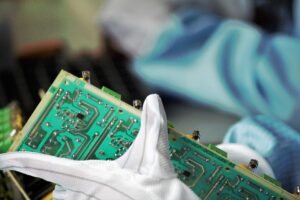 This happens also to an electronic engineer or to a sector expert.
This happens also to an electronic engineer or to a sector expert.
Nowadays the techniques used are very refined.
Once mounted on the boards, two scenarios can occur: the component works or it provides uncompliant values, not conforming to the technical data sheet.
In this second case, the damage has already taken place: time and human resources will have to be used for the board reprocessing.
Let us imagine, for instance, a production batch made up by 5,000 units: the damage can be enormous.
From your observatory on Shenzen, what is and what will the social impact of semiconductors’ crisis be?
The consequences of this crisis have a direct impact on the delivery terms of finished products, on employments and on prices.
Many customer companies, with which we have established excellent human relationships characterized by cordiality and mutual esteem, call us to express their concern for the dramatic consequences that this crisis will generate in case of its long duration: redundancy fund, possible layoffs and loss of important job orders for the company’s survival.









